Oil Is Washing Up on Brazil’s Beaches
Residents complain that Jair Bolsonaro's government has been slow to respond
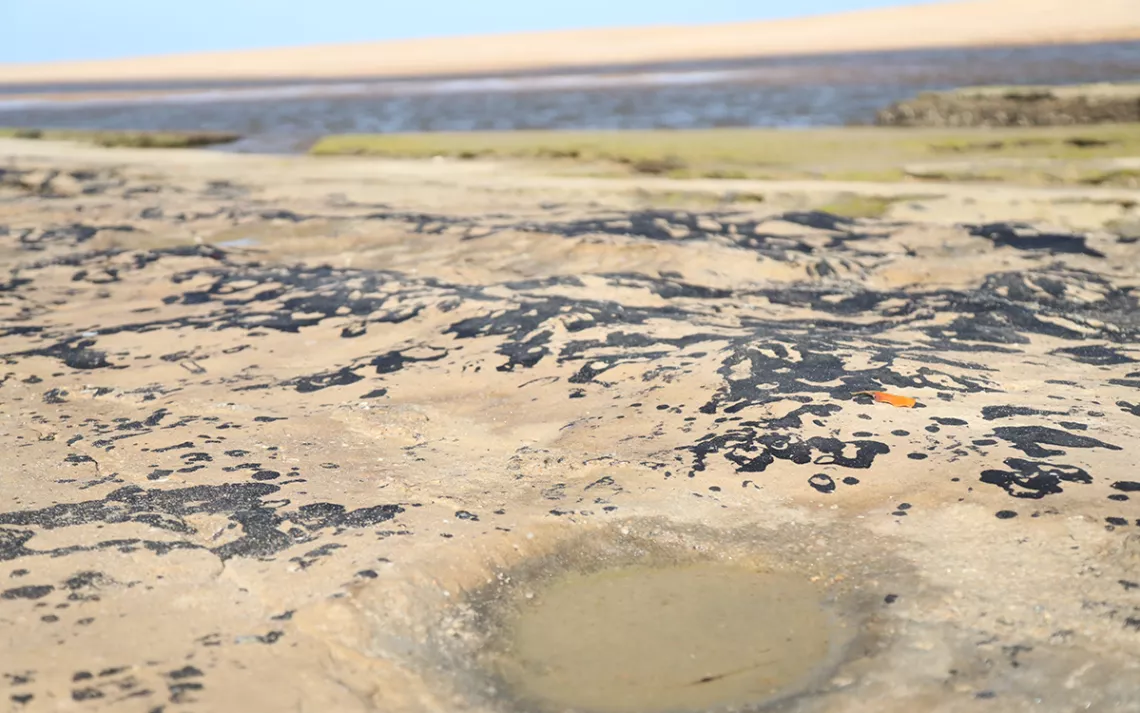
Photos by Michael Fox
The beach surrounding the Brazilian coastal town of Subauma, in northern Bahia, stretches long, straight, and seemingly forever. Palm trees line the tops of the dunes, which slope into crystal-blue surf. Along the coast, near the sandy streets of the town’s main square, tide pools form in the rocks.
On a Sunday in mid-November, dozens of beachgoers were wading through the turquoise water as kids splashed in the surf and played in the sand. And beside them, only feet away, were little black dots—thousands of them. They clung to the sand and the rocks, or else floated, glistening and metallic-looking, in the water. The black dabs lined the beach, stretching to the horizon in both directions.
It was oil, heavy crude.
“Look at this. My boy was playing in the sand over there, and look what we found,” said Nelson Cerqueira, who has been coming to this beach for years. He lifted up a plastic spoon filled with clumped, blackened sand. “It’s oil. Everywhere. We got it all over our feet.”
Crude oil began washing up on shores in the state of Pernambuco on August 30, just as Brazil was reeling from the country’s other recent environmental disaster, the Amazon fires. The oil hit the coast of several northern states first and then worked its way south.
Brazil’s Federal Police said a Greek tanker carrying heavy crude from Venezuela was to blame. Olivia Oliveira, a Federal University of Bahia geoscientist who led the chemical tests on the oil, told Sierra that there was an almost perfect match between oil samples collected on Brazilian beaches and the type of crude produced in Venezuela. But the shipping company said it has proof it was not responsible for the spill.
Months have gone by, and still it remains unclear where, exactly, the oil is coming from, how much more is out there, when it will arrive, and at which locations.
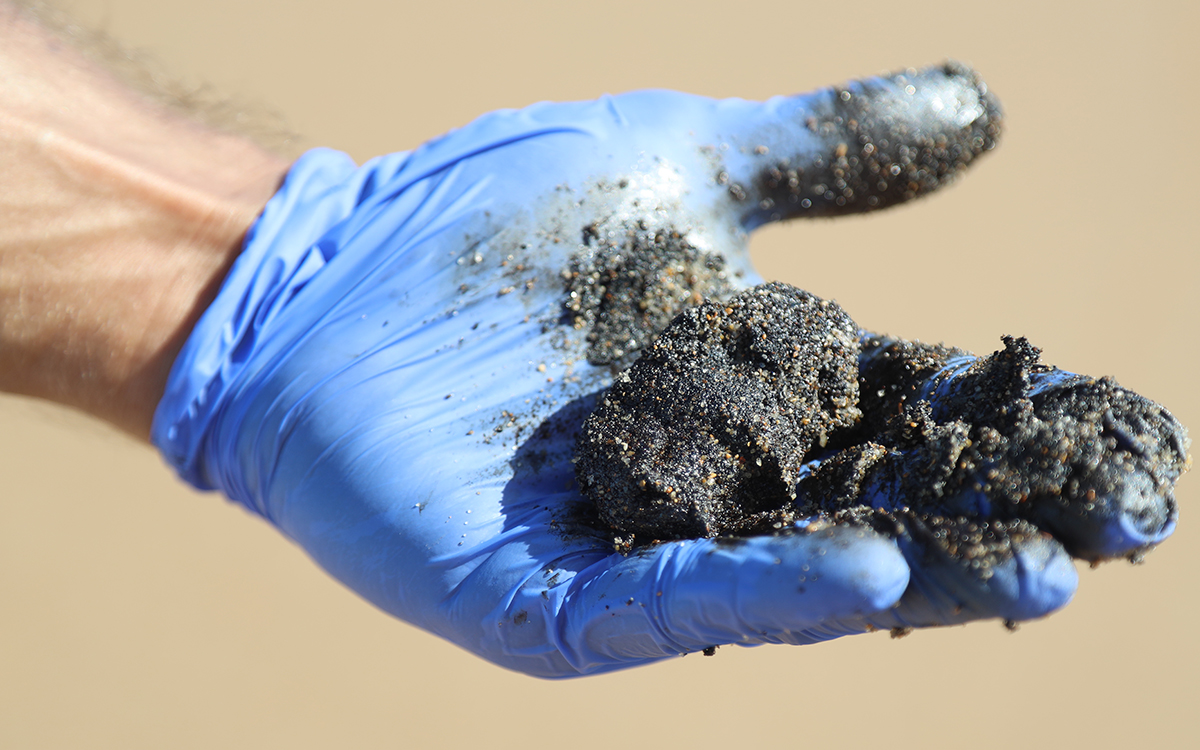
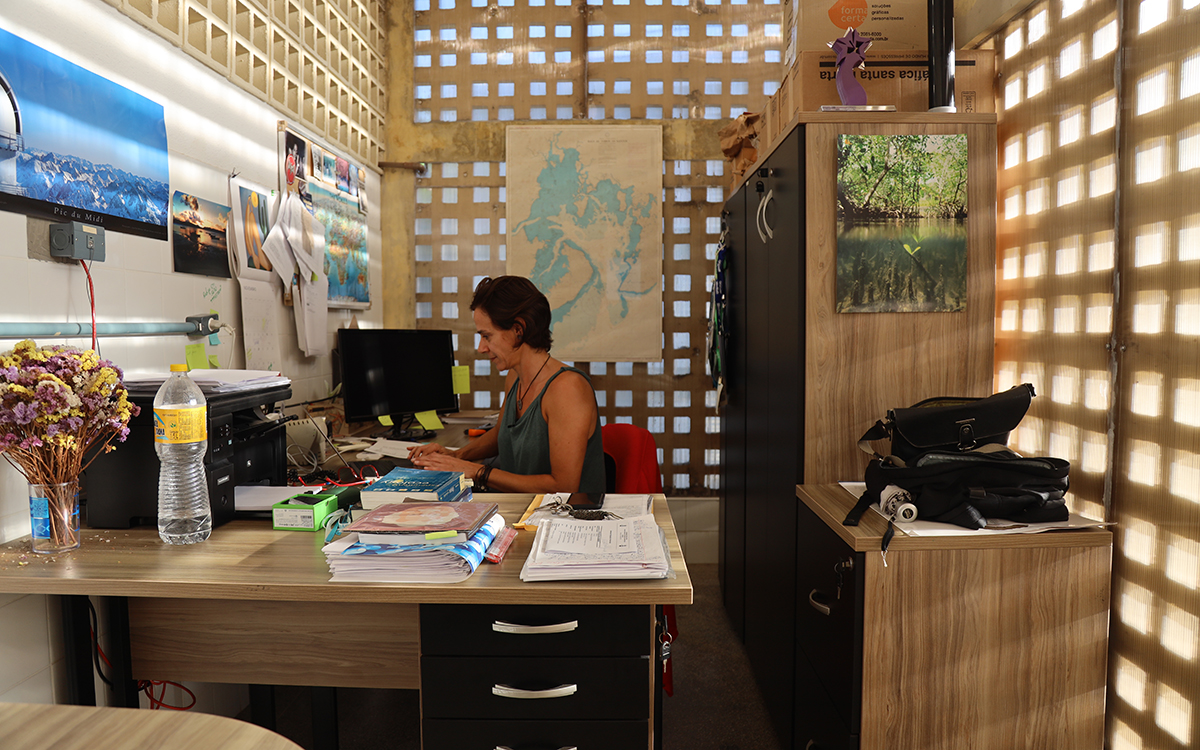
Oil has now washed ashore in at least 772 spots in 11 states, covering an area stretching more than 1,500 miles. “We are dealing with an unprecedented situation, with an accident that has never happened in the world, in terms of the extension of the impacted area,” Ícaro Moreira, a biology professor at the Federal University of Bahia, told Sierra.
North of the town of Subauma, where the Subauma River meets the Atlantic Ocean and forms an estuary, oil has covered the roots and leaves of mangrove trees. It’s buried in the mud or lays baking in the sun. Oil splotches paint the rocks in jagged designs, as if an elementary school class had a field day with dozens of cans of black paint then got bored. The oil reeks, with a sweet-sour smell.
The oil contamination on the beaches persists despite local residents’ attempts to clean it up.
Deraldo Santana Brito is a Subauma ambulance driver who has participated in the cleanup efforts. He says he has personally carried 20 bags of oil debris from areas near the mangrove forest. A huge, white, roughly 800-pound bag of oil-contaminated material sits beside the river, where it was left by one of the cleanup crews days or weeks ago.
“First, the longtime residents started picking up the oil, and then local officials got involved,” Santana Brito said. “Everyone pitched in, but you can see that it still wasn’t done very well, because if it had been done well, it wouldn’t look like it does now. It’s still not clean.”
When the first waves of oil hit the beaches in big, black, coagulated masses, locals responded as best they could. In the early days, many people attempted to clean up the thick, oily sludge with their bare hands. Friends and acquaintances formed WhatsApp groups like Guardioes do Litorial (Coastal Guardians) in Bahia and Salve Maracaípe (Save Maracaípe) in Pernambuco. They began monitoring beaches and responding with teams of volunteers as oil covered the coast.
The country’s Environment Ministry is the prime agency tasked with responding to serious environmental disasters like the oil spill. But the federal government was slow to act, likely, in no small part, due to President Jair Bolsonaro’s elimination, in April, of two committees involved in the implementation of Brazil’s national oil disaster contingency plan.
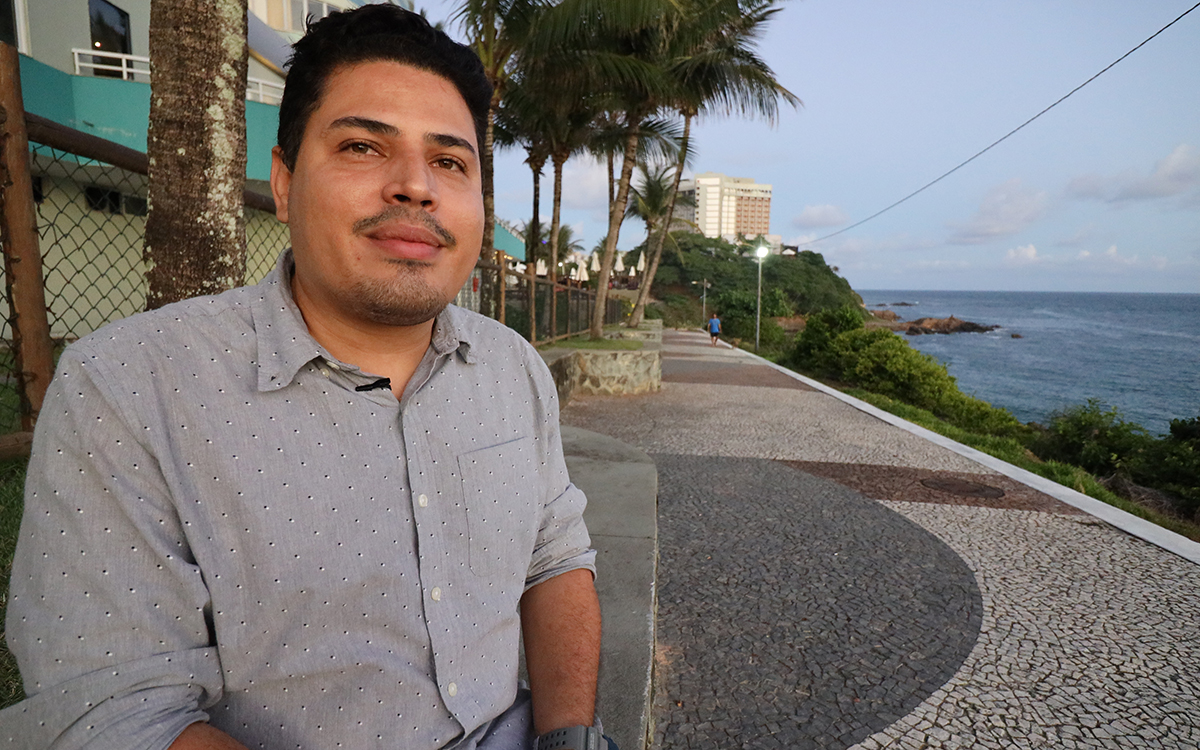
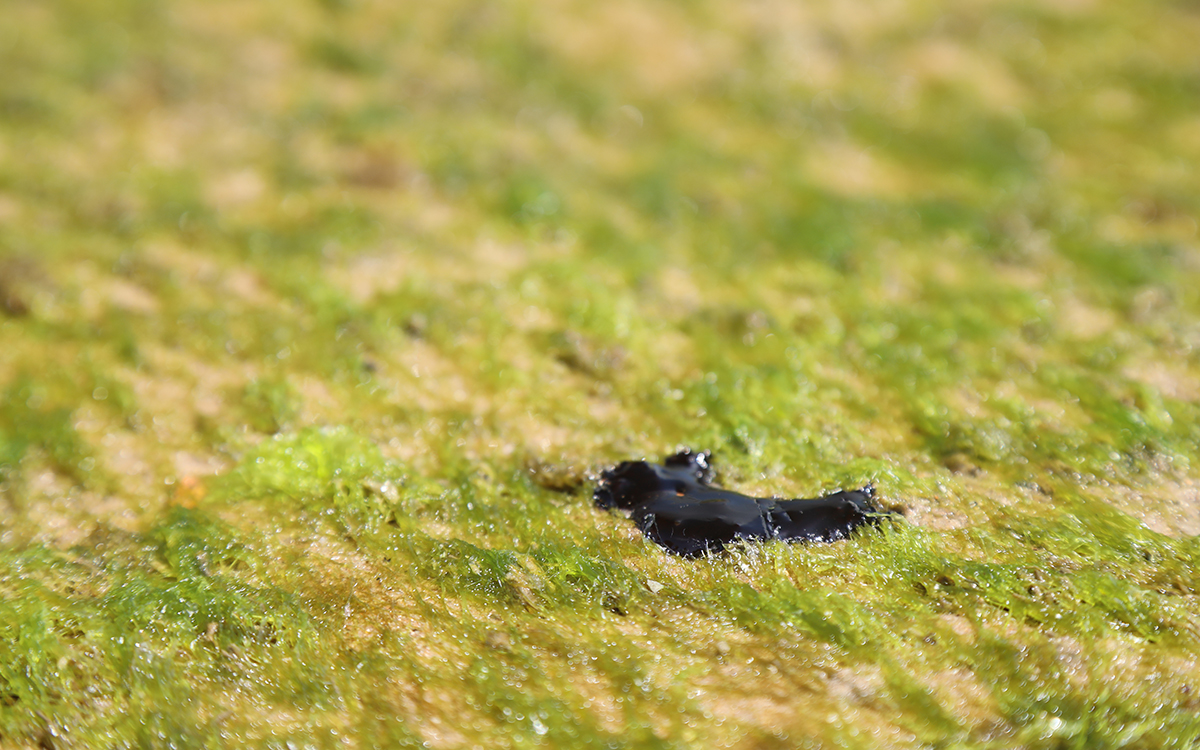
City and municipal governments attempted to fill the void. In major urban centers, city sanitation crews were dispatched as waves of oil arrived. In smaller towns, the responsibility often fell on the shoulders of municipal security forces. The navy and crews from Brazil’s state-run oil company Petrobras also took a leading role in clearing the oil from beaches across the northeast.
Otherwise, the federal government seemed confused and disorganized. Officials said proactive containment measures (used previously in spills around the world) like creating barriers to block the oil before its arrival to the coast could not be implemented, because the heavy crude was floating too far below the surface of the ocean. The federal government only rolled out a federal action plan in mid-October, after public interest groups took to the courts to demand it be implemented. It took seven weeks after the first oil appeared on Brazilian beaches for the military to announce that it was dedicating 5,000 soldiers to the cleanup effort.
Similar to what happened with the Amazon fires earlier this year, many Brazilians blame the Bolsonaro administration for the inaction. Some say he’s playing politics; Brazilians in the country’s poorer northeastern states voted overwhelmingly against him in last year’s elections. Environmentalists are also calling for the removal of Environment Minister Ricardo Salles, who insinuated that perhaps a Greenpeace ship was responsible for the spill.
Meanwhile, government officials say 4,500 tons of oil have been cleaned off beaches since the disaster began. Brazilian navy officials say the country has passed the height of the crisis.
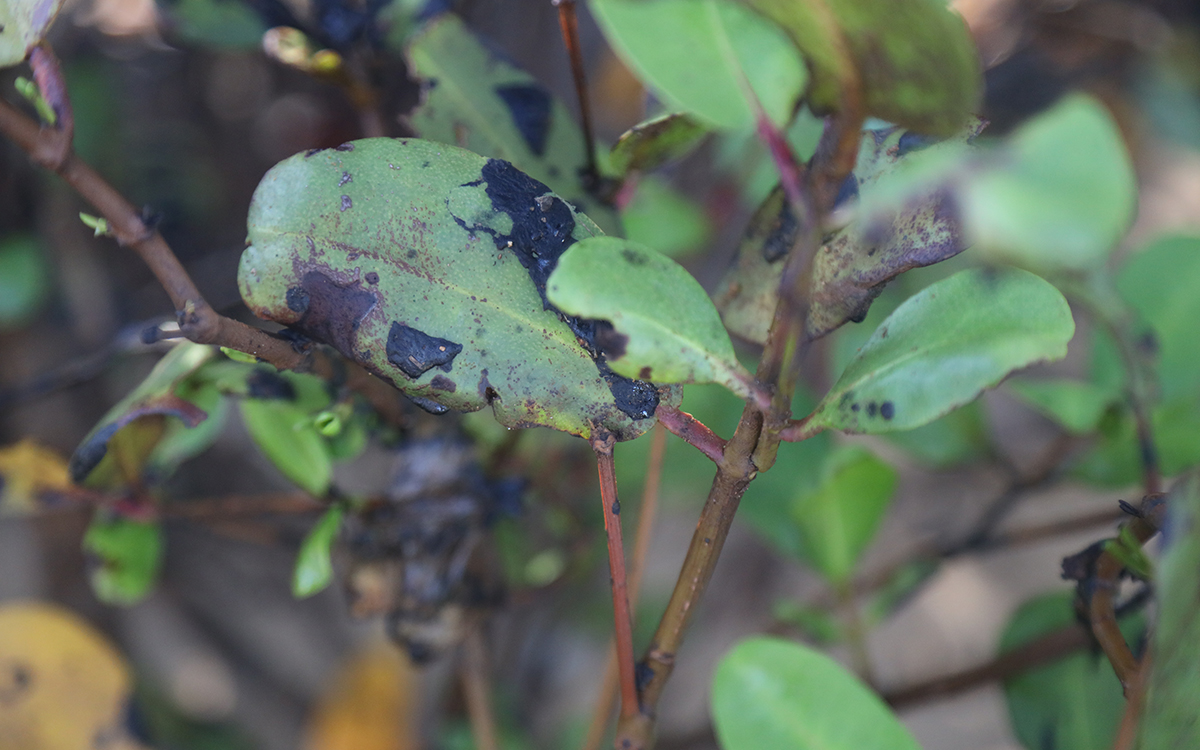
Even as it appeared that the arrival of the oil might be slowing, large clumps of heavy crude washed up in numerous states during the last weeks of November, including on the pristine Morro do Sao Paulo beaches near the Bahia state capital, Salvador. Both the state of Espirito Santo, just to the south, and Rio de Janeiro have been hit.
“This is new. This is all new,” Santana Brito said in mid-November as he walked the beach a few miles outside of Subauma. At his feet was a thick row of fingernail-size clumps of oil that stretched to the beach horizons—south toward Salvador and north toward Aracaju, the capital of the state of Sergipe. “I was here yesterday, and none of this was here.”
There in Aracaju, a skeleton cleanup crew of 14 sanitation workers has been spending each day walking the beach and meticulously clearing newly arrived pebble-size drops, as if raking leaves. They wear thick orange and green work coveralls and labor with shovels, rakes, and wheelbarrows. “We’re here Sunday to Sunday,” their boss, Sergio da Silva, told Sierra. “Sometimes, we think there’s not going to be any more, and when we come out, here it is.”
Outside a few of the major cities—or the top tourist destinations—most of the oil will never be picked up. There is simply no cleanup plan for it.
“These small remnants are no less harmful,” said Bárbara Silva, a volunteer with the Coastal Guardians. “They can get into the food chain and into the mangrove and the estuaries. And these small fragments also contaminate the local ecosystem.”
“It’s like cleaning ice,” said Ceudes Reis dos Santos, a fisherman in the northern Bahia village of Sirinbinha. “The moment you clean up the oil, it’s back.”
He said that he has participated in eight cleanups on the sand bar, where the Itapicuru River empties into the Atlantic Ocean. And still the sand is peppered with black dots.
Fishermen like Reis dos Santos have been particularly hit hard by the oil spill. While Brazilian officials say the local seafood is safe to eat, many people have stopped buying it out of fear that it may be contaminated. Seafood restaurants and fish stores have seen sales plummet by 50 percent or more. Many fishermen have gone months without selling any of their catches, and many fishermen and their families are eating the fish to survive.
“I have three children, and they all depend on me. It’s really hard,” said Antonio Santana Pereira, a 58-year-old fisherman in Salvador with a mass of dreadlocks and powerful arms who has been free diving for lobster and octopus since he was a boy. “I have to pay the bills. I don’t have anything else to do. My life is fishing, and this is how I make my living.”
While the beaches have been the top priority for the official and grassroots cleanup efforts, they are the least of the concerns for many environmental researchers.
“If you go to the mangrove, or the sea grasses, or the coral reefs, the cleaning process is very very difficult,” Vanessa Hatje, a professor at the Bahia Federal University’s Interdisciplinary Energy and Environment Center, told Sierra. “These environments are the most sensitive. I think we’re going to have very-long-term impacts.”
Already, oil that has washed into mangrove forests has seeped into the deep mud there. Mangroves have seen little cleanup, since it’s difficult to access the entangled forests. Yet mangroves represent one of the coastline’s most biologically diverse and sensitive ecosystems. Crabs, shellfish, and other marine animals depend on it. Many fish return to the mangrove forests to reproduce.
“There are studies that show that after oil spills, many fish show stunted growth, a reduced size of their children, deformation in the larva and eggs,” oceanographer Mariana Thevenin told Sierra as she stood at the edge of Flamingo Beach in northern Salvador. “These oil substances contaminate the organisms and the environment, and this can easily get into the food chain.”
But right now, everything is hard to measure, and when it comes to the long-term impacts of the oil spill, there are more questions than answers.
“The most important thing is that we don’t really know,” Hatje said. “We don’t really know. That’s the scary thing about it.”
 The Magazine of The Sierra Club
The Magazine of The Sierra Club



